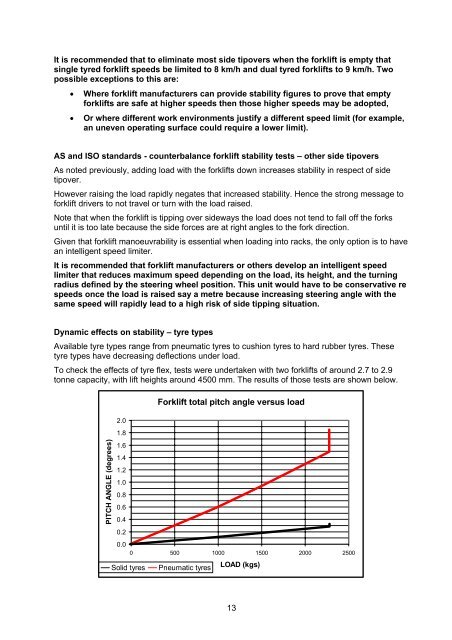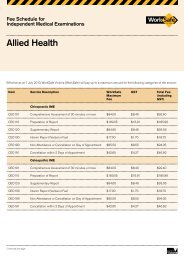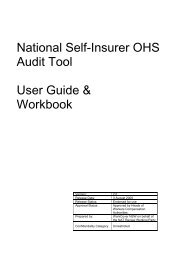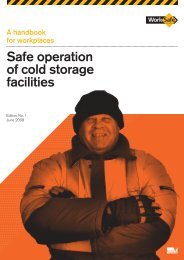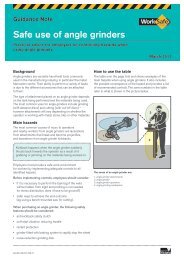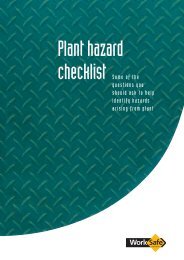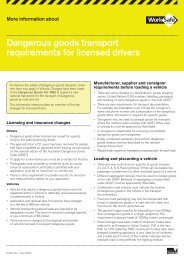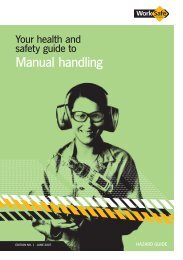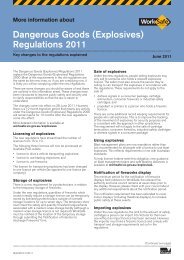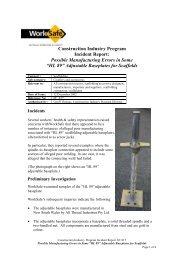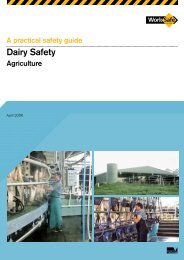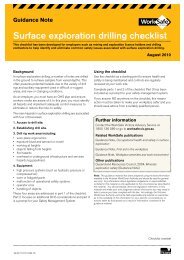Forklift stability and other technical safety issues - Monash University
Forklift stability and other technical safety issues - Monash University
Forklift stability and other technical safety issues - Monash University
You also want an ePaper? Increase the reach of your titles
YUMPU automatically turns print PDFs into web optimized ePapers that Google loves.
It is recommended that to eliminate most side tipovers when the forklift is empty thatsingle tyred forklift speeds be limited to 8 km/h <strong>and</strong> dual tyred forklifts to 9 km/h. Twopossible exceptions to this are:• Where forklift manufacturers can provide <strong>stability</strong> figures to prove that emptyforklifts are safe at higher speeds then those higher speeds may be adopted,• Or where different work environments justify a different speed limit (for example,an uneven operating surface could require a lower limit).AS <strong>and</strong> ISO st<strong>and</strong>ards - counterbalance forklift <strong>stability</strong> tests – <strong>other</strong> side tipoversAs noted previously, adding load with the forklifts down increases <strong>stability</strong> in respect of sidetipover.However raising the load rapidly negates that increased <strong>stability</strong>. Hence the strong message toforklift drivers to not travel or turn with the load raised.Note that when the forklift is tipping over sideways the load does not tend to fall off the forksuntil it is too late because the side forces are at right angles to the fork direction.Given that forklift manoeuvrability is essential when loading into racks, the only option is to havean intelligent speed limiter.It is recommended that forklift manufacturers or <strong>other</strong>s develop an intelligent speedlimiter that reduces maximum speed depending on the load, its height, <strong>and</strong> the turningradius defined by the steering wheel position. This unit would have to be conservative respeeds once the load is raised say a metre because increasing steering angle with thesame speed will rapidly lead to a high risk of side tipping situation.Dynamic effects on <strong>stability</strong> – tyre typesAvailable tyre types range from pneumatic tyres to cushion tyres to hard rubber tyres. Thesetyre types have decreasing deflections under load.To check the effects of tyre flex, tests were undertaken with two forklifts of around 2.7 to 2.9tonne capacity, with lift heights around 4500 mm. The results of those tests are shown below.PITCH ANGLE (degrees)2.01.81.61.41.21.00.80.60.40.20.0Solid tyres<strong>Forklift</strong> total pitch angle versus load0 500 1000 1500 2000 2500Pneumatic tyresLOAD (kgs)13


